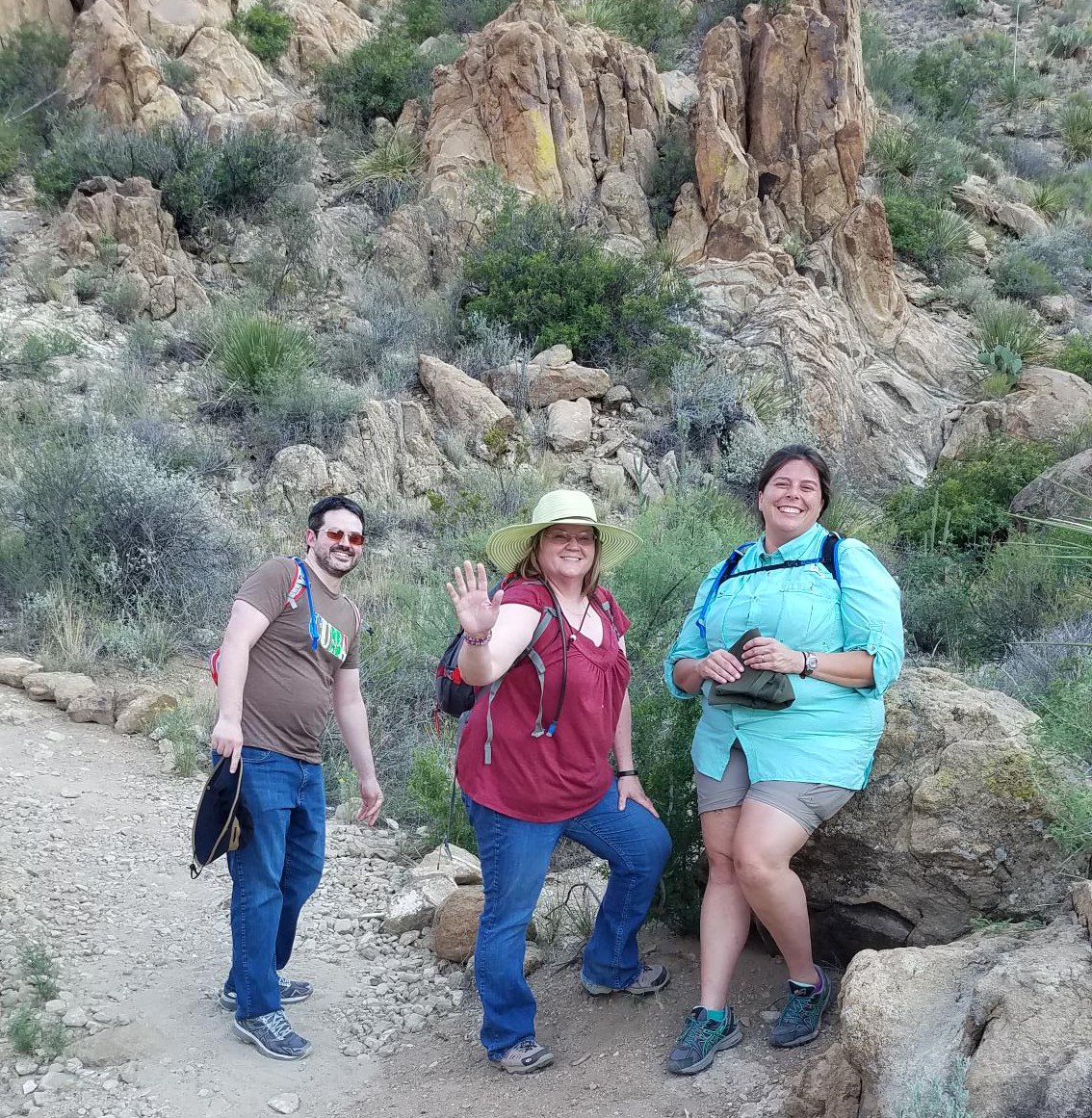Area Teachers get firsthand look at ‘Edge of the World’
Situated on the border with Mexico along the Rio Grande, Big Bend National Park is described as a place where night skies are as dark as coal and rivers carve canyons through isolated mountains.
And it is here, at the “very edge of the world,” where 15 area middle school science and math teachers got a firsthand look at phenomena such as faulting, folding and jointing which results when tectonic plates shift, slide and collide. The trip was part of the Teacher Quality Grant Program, which provided 8th-grade science teachers with 110 hours of professional development during a two-week intensive summer workshop including Saturday sessions that spanned the academic year.
 Donna Freeman is a teacher at Robbie E. Howard Junior High School in the Waxahachie Independent School District who made the eight hour trip to West Texas.
Donna Freeman is a teacher at Robbie E. Howard Junior High School in the Waxahachie Independent School District who made the eight hour trip to West Texas.
“My experiences at Big Bend enhanced my understanding of various Earth science content due to the visualization of being there in the park and also through hands-on experiences,” Freeman said. “The trip allowed me to see faults, layering of sediments, weathering examples and erosion.”
The North Texas Science and Mathematics Institute at UNT has supported the professional development of 50 middle school science and math teachers from Dallas, Fort Worth and Vidor independent school districts during the past two years.
The goals for these projects were to increase teacher content knowledge of 8th grade Earth science, 8th grade algebra I and middle school geometry teachers; to develop multiple instructional strategies nested within pedagogical content knowledge; to promote the use of technology as a transparent instructional tool; to increase teacher use of just-in-time formative assessment; and to promote communities of practice.
During the workshops, teachers learned about, and then implemented in their classrooms, specific pedagogical content knowledge and strategies that address the learning needs of students, using instructional techniques guided by learning progressions and questioning strategies designed to build proficiency and excellence in the application of these practices.
The professional development included the teachers making presentations at the Conference for the Advancement of Science Teaching and, as a continuation of their professional development during summer 2018, 8th Grade science teachers traveled with UNT faculty to Big Bend National Park to complete an additional 40 hours of professional development.
“Around every corner, Big Bend offers luscious surprises,” said Pamela Harrell, Associate Dean for Administration and Assessment in the College of Education, who led the teacher training. “For example, who connects volcanos and oceans with a desert? One would not expect it, but fossils can be seen everywhere, such as in the desert rocks of Ernst Tinaja. Big Bend was covered by an ocean at one time and over time, it was the oceans and shallow seas that formed spectacularly etched canyons such as Boquillas Canyon and the Santa Elena Canyon. There is also evidence of violent volcanic activity that can be seen in and around Big Bend.”
Big Bend National Park is one of the few “dark spots” where there are naturally dark skies, infrequent cloud cover, and low humidity providing an unusual opportunity to investigate components of the universe with sharp visual acuity.
As suggested by past participants, this experience provides teachers with captivating stories and knowledge that will help engage students in abstract knowledge and processes that are poorly understood by students. Earth/Space Science is the lowest performing category on STAAR test, and this type of highly focused experiential learning is a high-yield instructional practice.
Pierre Ice, a teacher at the Dallas Environmental Science Academy, said he gained a wealth of content knowledge that he will bring back to the classroom.
“We learned of the many impacts of humans on the Rio Grande river. I saw first-hand how damming upstream of the river has caused the water level to decrease and stopped flooding along the river bank. This is important for several reasons. First, the low flow allows toxins to build up which can be dangerous to wildlife. The lack of flooding causes vegetation to overgrow on the river banks which can reduce the water levels due to plant overpopulation,” Ice said.
“The damming of the Rio Grande also reduces the economic potential of the area by limiting recreational water activities. Another human impact on this ecosystem is the introduction of invasive species. Tamarix ramosissima (Saltceders) was introduced to Big Bend and has become a major threat to the local ecosystem. It is an omnipresent plant at the river banks, and it uses up to 100 gallons of water a day.”
During the trip, the teachers stayed at the Chisos Mountains Lodge in the park and hiked trails and kayaked along the Rio Grande. An $858,781 grant from the Texas Higher Education Coordinating Board funded the year-long training, and the College of Education’s Department of Teacher Education and Administration funded the field trip to Big Bend.
“It’s still hard for me to imagine the magnitude of force and motion that would create structures like the Sierra de Santa Elena, a limestone block that was uplifted about 1,500 feet. If I had the resources, Big Bend is an experience I would give to all teachers and 8th-grade students in Texas,” Harrell said.

